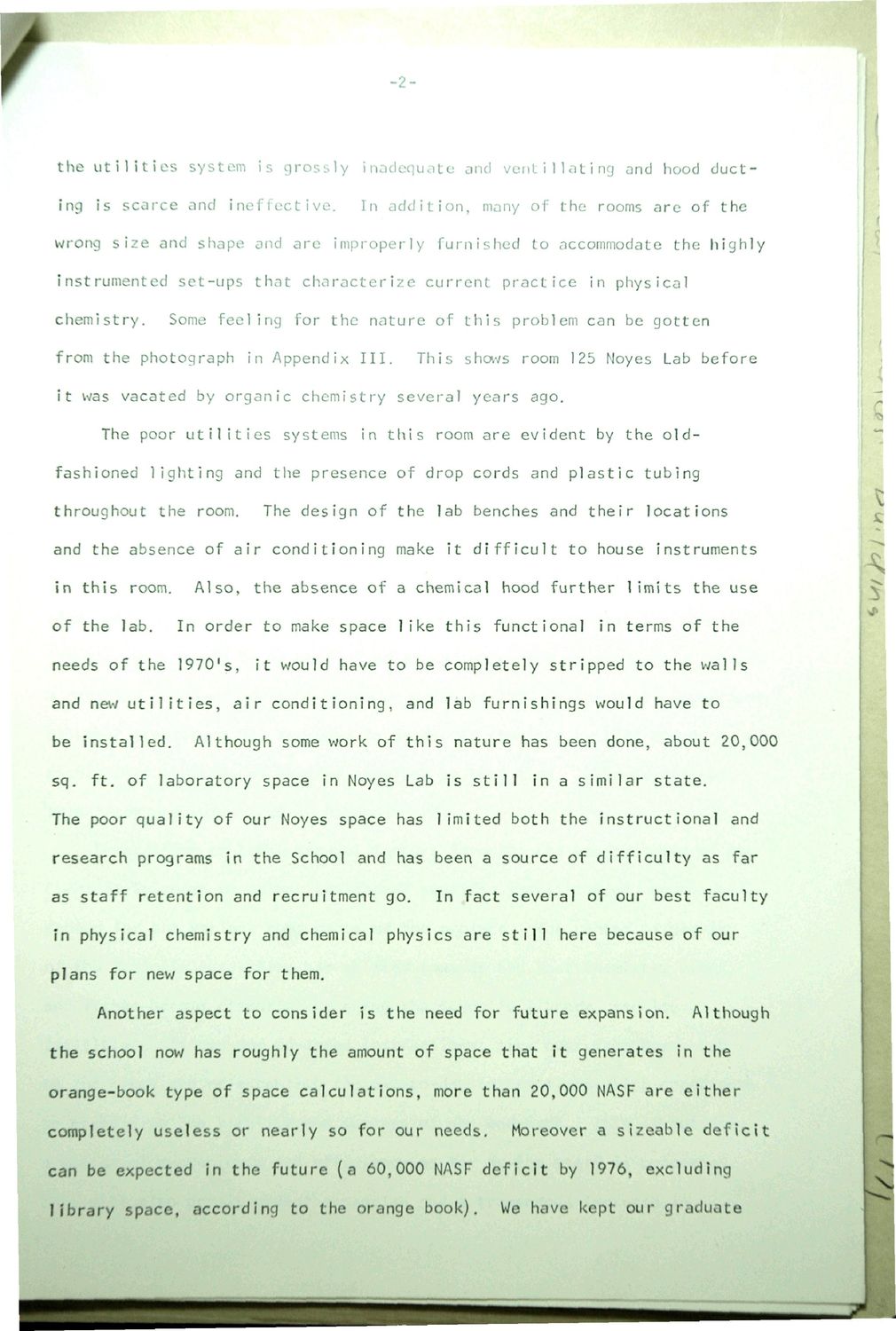Caption: Planning Report - Chemical Sciences Building
This is a reduced-resolution page image for fast online browsing.

EXTRACTED TEXT FROM PAGE:
-2- the utilities system Is grossly inadequate and vent I Mating and hood ducting Is scarce and ineffective. In addition, many of the rooms are of the wrong size and shape and are Improperly furnished to accommodate the highly instrumented set-ups that characterize current practice in physical chemistry. Some feeling for the nature of this problem can be gotten This shows room 125 Noyes Lab before from the photograph in Appendix III. it was vacated by organic chemistry several years ago. The poor utilities systems in this room are evident by the oldfashioned lighting and the presence of drop cords and plastic tubing throughout the room. The design of the lab benches and their locations and the absence of air conditioning make it difficult to house instruments in this room. of the lab. Also, the absence of a chemical hood further limits the use In order to make space like this functional in terms of the needs of the 1970's, it would have to be completely stripped to the walls and new utilities, air conditioning, and lab furnishings would have to be installed. Although some work of this nature has been done, about 20,000 sq. ft. of laboratory space in Noyes Lab is still in a similar state. The poor quality of our Noyes space has limited both the instructional and research programs in the School and has been a source of difficulty as far as staff retention and recruitment go. In fact several of our best faculty in physical chemistry and chemical physics are still here because of our plans for new space for them. Another aspect to consider Is the need for future expansion. Although the school now has roughly the amount of space that It generates in the orange-book type of space calculations, more than 20,000 NASF are either completely useless or nearly so for our needs. Moreover a sizeable deficit can be expected in the future (a 60,000 NASF deficit by 1976, excluding library space, according to the orange book). We have kept our graduate
|